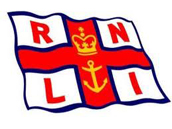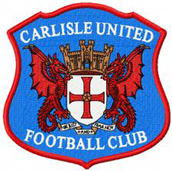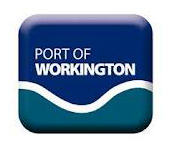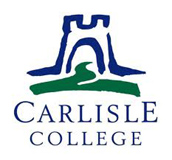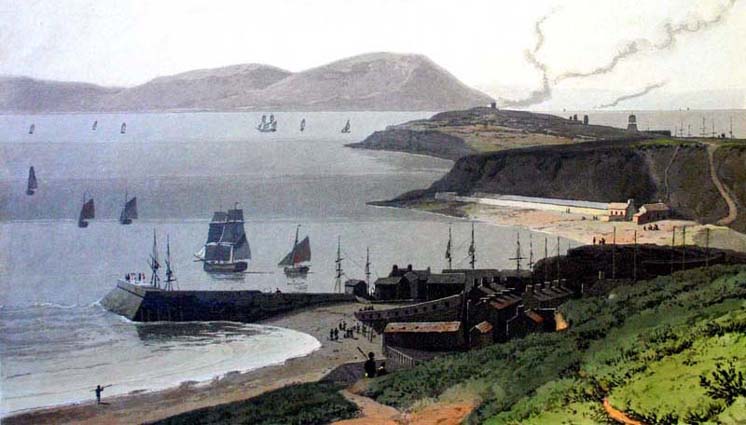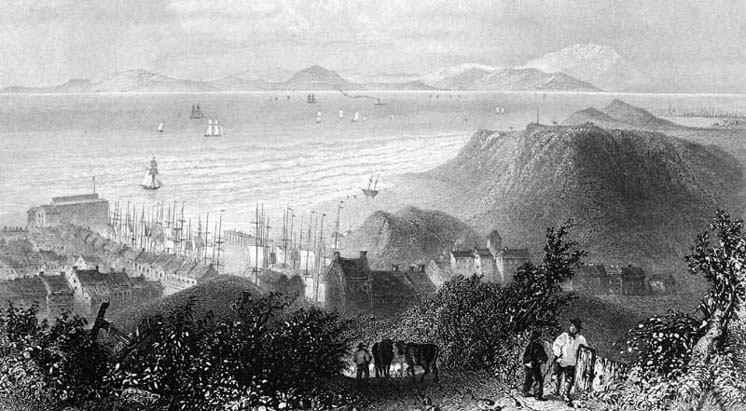- Home
- Scarrows
- Mariners
- Cumberland
- Miscellaneous
Harrington
Harrington Harbour circa 1815, showing ropery to right
General Description 1901
This parish, comprising the town and port of Harrington, is situated in the Allerdale-above-Derwent ward. The parish extends two and a half miles along the sea coast, and about one mile inland. It is bounded on the north by Workington, on the west by the Irish Sea, on the south by Moresby, and on the east by Workington and Distington. The name in ancient documents is variously written Haverington and Haveringham, and presumably impressed itself upon the possessors of the manor, the Harringtons. At the beginning of the 19th century the population of Harrington was 1,357; in 1851 it was 2,169; in 1881, 3,019; and in 1891, 3,535.
The flourishing little town of Harrington is a creation of recent times. A century ago it was an insignificant place, whose name was scarcely known beyond the confines of the parish. Now we have a town of modern and well-built houses, a fine harbour, recently constructed, covering 21 acres, with a quay 1,250 feet, available for boats from 800 to 1,200 tons, and crane power to 10 tons.
Harrington Harbour circa 1840
Industry in 1901
Coal is abundant in the parish, and large quantities are raised, affording employment to a considerable number of the population. Although the Harrington colliery consists of nine pits, only three are now in operation. These are called the "Five," "Seven," and "Nine" pits. The "No. 7" pit was sunk in 1868, the "No. 9" in 1880, and the three produce 100,000 tons of coal annually, employing about 446 hands. These workings are carried into the Bannock band, where the coal is 6¼ feet in thickness; it is, however, fast being exhausted. The royalty of the minerals, as far as low water, is retained by the lord of the manor, but under the sea belongs to the Crown. The pits extend about a mile submarine, and are the property of James Bain & Co. The prosperity of Harrington is largely dependent on the iron manufacture. This trade was commenced here by Mr. H.C. Plevins, who erected furnaces in 1857; they subsequently became the property of Messrs. Blair & Co., and are now owned by Sir James Bain & Co., who employ about 250 men. The Harrington Iron Works consist of four furnaces, and are fitted with the most improved appliances for the manufacture of pig iron. The amount turned out by the firm averages from 57,000 to 58,000 tons annually. The same firm own also a Brick Works, where fire bricks and clay are manufactured.
Shipbuilding was an important industry here for a century, between 1780 and 1880. A greater coverage of this is given on the page of Thomas Scarrow, Shipwright of Harrington.
Port in 1901
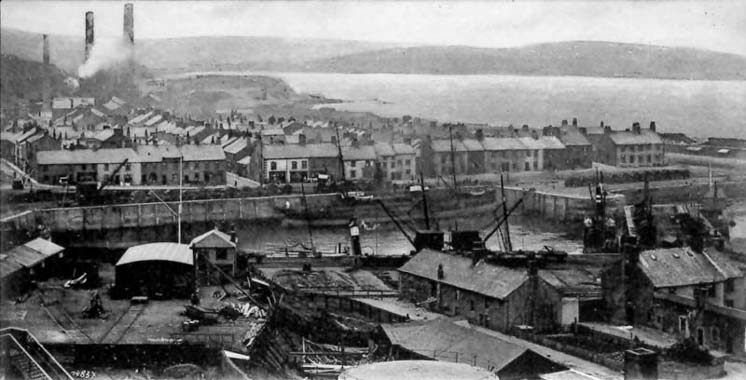
Harrington Harbour circa 1900
The harbour is the property of the Curwens, of Workington, but the lessees are the Harrington Harbour Board, representing Charles Cummell & Co., the Moss Bay Iron & Steel Co., and James Bain & Co. The average high tide is 17 feet, and the principal trade of the port is the carriage of iron ore, sand, rail, etc. The coal trade, which is chiefly carried on with the opposite coast of Ireland, gives employment to a large number of vessels. The lime from the quarries of Distington, which was formerly exported in large quantities to Scotland, is now used in the furnaces of Harrington. The dues are 3½d. per ton, and 7d. on foreign loads. During 1899, 755 steamers discharged and loaded at this port, having a total tonnage of 270,000 tons.
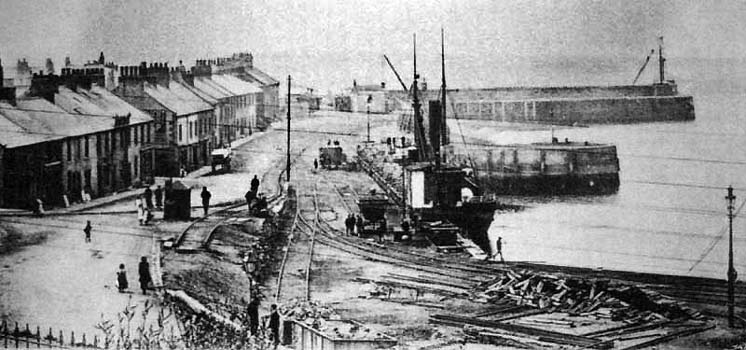
Harrington Quayside circa 1900
In 1794 the number of vessels belonging to Harrington was about 60, averaging 100 tons burthen; in 1822 the number was 38, of an aggregate burthen of 4,976 tons; in 1828 the number had increased to 43, with a carrying capacity equal to 5,479 tons; in 1840 there were 44 vessels belonging to the port, and their burthen was 6,052 tons; in 1850 the number of vessels was 35, having an aggregate burthen of 6,000 tons; in 1858 there were only 30 vessels registered as belonging to the port, whose total tonnage was 5,780. In 1901, there were none registered to Harrington.
Church and Schools
The Church, which is of unknown dedication, occupies a beautiful situation on an eminence overlooking the town, and upon the site of an old Roman camp. It consists of nave and chancel, with square western tower, and was rebuilt in 1885, with the exception of the tower. A 12th century font, in good condition, is in the porch. During the rebuilding a Roman altar was discovered, which is now in the museum at Newcastle. In the tower is a bell bearing the date of 1670. At what time or by whom the church of Harrington was first founded cannot now be ascertained, but it appears to have been in existence as early as the Norman period.
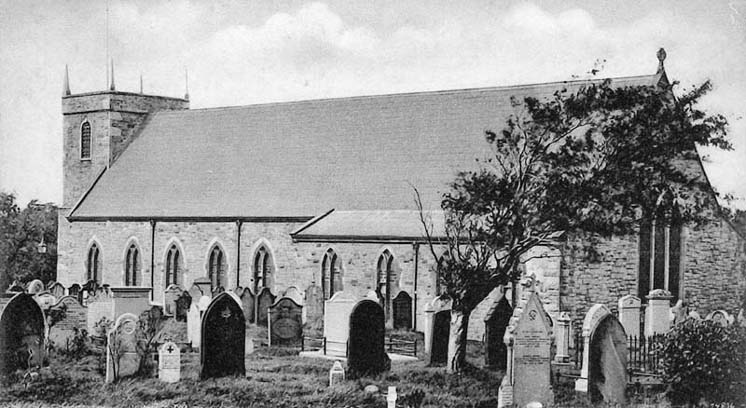
Harrington Parish Church
The School Board for Harrington was formed in December, 1873. There are three schools as follows: I. The Senior Mixed School, comprising Standard IV and upwards, built in 1897 on an eminence above Church Road. The accommodation provided is for 266. II. The Junior Mixed School, erected in 1875. Having been twice enlarged, it now affords room for 453 children. III. Lowca School (mixed), with accommodation for 165. St. Mary's Catholic Schools, Church Road. Number on books, 151; average attendance, 120.
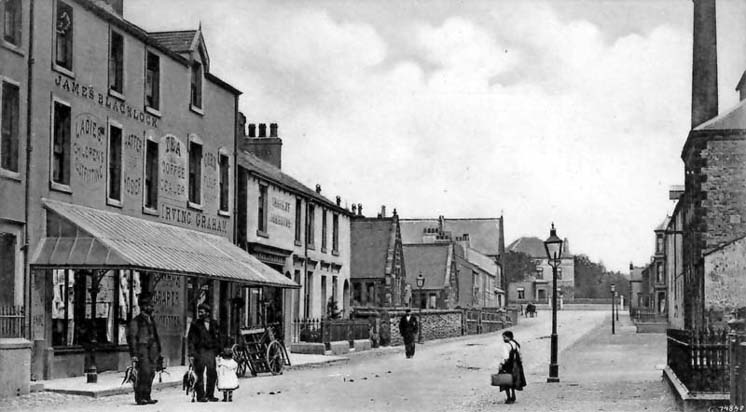
Church Road, Harrington
Imports
| Goods | Place of Origin |
|---|---|
| Timber | America |
| Hemp | Russia |
| Iron Ore | Spain |
Exports
| Goods | Destination |
|---|---|
| Ironstone | 18th Century |
| Fireclay | 18th Century |
| Coal | Ireland |
| Pig Iron | Britain |
| Lime | Scotland |
| Sand | Britain |
| Rails | Worldwide |
Industry
| Port Industries | Other Industries |
|---|---|
| Shipbuilding (1786-1869) | Coal Mining |
| Sail-making | Iron Works |
| Ropery | Copperas Works |
| Brick Works |
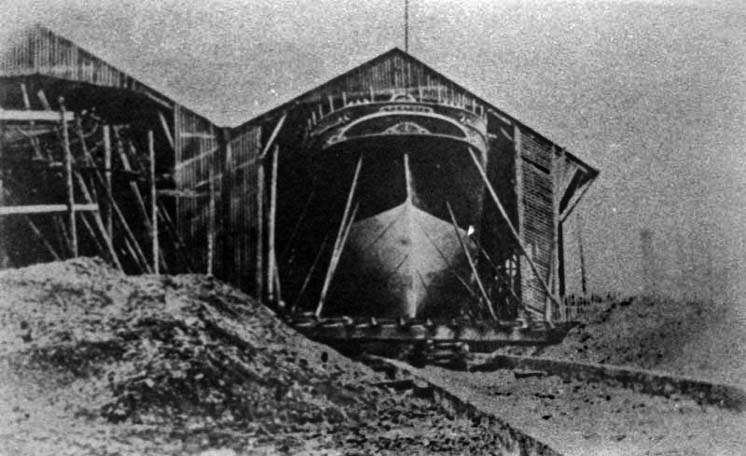
Harrington Ship Yards circa 1850
Scarrow Associations
Along with Whitehaven, Workington, Liverpool and London; Harrington was one of the (five) ports in which one or more of the Scarrow mariners was based. One or two of the sailing ships in which the Scarrow's sailed were registered here, although Harrington came under the jurisdiction of Workington. John (Harbour area) and Joseph (Harbour Area, Rose Hill) lived here throughout their lives although the latter did also have an abode in Stepney, London in the 1850s. William (Harbour area), Thomas (Quay Street and Rose Hill) and Robert (13 Quay Street and 1 Christian Street) lived here in the early part of their lives, before moving to Liverpool.
| Scarrow | Period |
|---|---|
| John Scarrow II | 1802-1830. Birthplace and home town throughout his life. |
| Joseph Scarrow | 1816-1863. Birthplace and home town throughout his life. |
| William Scarrow | 1820-1853. Birthplace and residence until 1856. |
| Thomas Scarrow | 1842-1861. Birthplace and residence until 1861. |
| Robert Scarrow | 1883-1913. Birthplace and residence until 1906. |
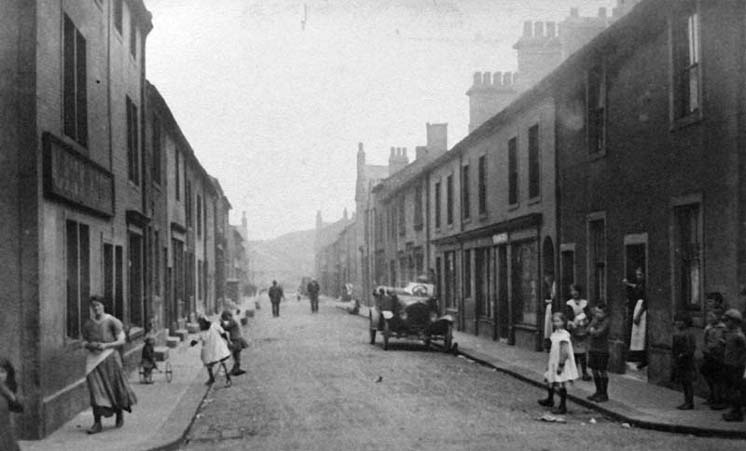
Christian Street, Harrington circa 1900

